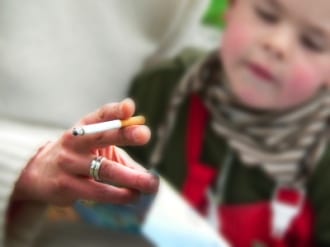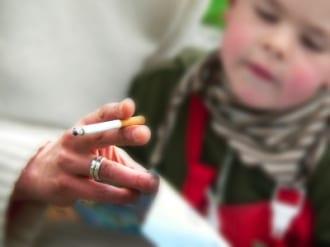
“I feel like a fish with no water.”
That’s how the child in the public service announcement featuring flopping, gasping goldfish describes what it feels like to have an asthma attack. The spot encourages parents of the close to nine million kids who suffer from asthma to take steps to decrease the number of attacks their kids have because, as the announcer says, “even one attack is one too many.”
Both environmental factors — things like mold, pollen, cold air and cigarette smoke — and genetic factors are thought to contribute to childhood asthma, a disease that causes more than 10 million missed days of school and leads to about two million trips to the emergency room each year.
Researchers are beginning to realize that asthma that strikes early in life may be a distinct disease from cases that set in later. In 2007, a genomewide association study linked several related SNPs in a region of chromosome 17 specifically to childhood asthma.
Childhood Asthma and Secondhand Smoke
New research published online today in the New England Journal of Medicine confirms these genetic findings and adds a new twist: the SNPs have an effect only in kids exposed to tobacco smoke.
Bouzigon and colleagues studied several hundred French families and found a number of SNPs linked with asthma on chromosome 17, just as in earlier studies. The SNPs were associated only with asthma that began at age four or younger.
Like previous researchers, Bouzigon et al could not determine exactly how the SNPs are related to childhood asthma risk; but they could clearly show that the variants’ effects are triggered by exposure to tobacco smoke.
Variants Associated with Risk
The researchers found that the overall risk of early-onset asthma was increased at least 1.7-fold for people with two risky copies of any of the SNPs compared to those with none or only one. But when they took smoking into account, they saw that children with two risky copies of any of the SNPs who were also exposed to tobacco in utero, during infancy or both actually had risk at least 2.3-fold higher than those with the more favorable genotypes. The SNPs had no statistically significant effect among children who were not exposed to tobacco smoke early in life.
In an accompanying editorial in NEJM, two researchers not involved in the study — John Holloway and Gerard Koppelman — say that the influence of early life events in the development of asthma is well supported and that the interaction of genes and tobacco smoke seen by Bouzigon and colleagues “further highlights the detrimental effect of such early life exposure on respiratory health.”
But, say Holloway and Koppelman, the importance of the exact timing of exposure to tobacco smoke is not clear, as Bouzigon et al could not differentiate between prenatal and postnatal exposure.
Although more research will be needed to confirm the results in this new report, Holloway and Koppelman think that as more is learned about how chromosome 17 variants affect asthma risk, this knowledge may help physicians better treat the disease.




